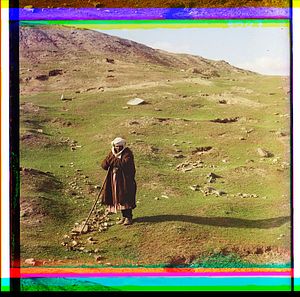Weekend Central Asia reads:
Comparing the Middle East and Central Asia: Muftah and Perspectives on Central Asia teamed up to produce a series of articles that explore the ways in which the histories, politics, and development of the Middle East and North Africa and Central Asia converge and diverge. Especially since the Arab Spring in 2011, casual observers have remarked on the similarities (and therefore shared risks) between the two regions: imperial and colonial legacies, autocratic leaders, and Islam. But the unrest that continues to rack the Middle East hasn’t destabilized Central Asia.
In one of the essays, Raymond Hinnebusch and Sally Cummings, both professors of international relations at the University of St. Andrews, note divergent styles of colonialism as contributing to postcolonial stability in Central Asia and unrest in the Middle East:
For many Western empires, colonies were acquired for commercial reasons and located far from the imperial state. As a result, political integration and inclusion did not, by and large, occur in these places. By contrast, in the Soviet Union, regional elites were assimilated into Soviet political culture and represented in central bodies that governed the empire, albeit through authoritarian practices.
A Central Asian living under the Soviet system could be a Soviet, but an Egyptian living under British rule could never be British. Once independence came, the former did not foster resentment (though it did ingrain Soviet-style government) in the way the latter did.
There’s an article from Kristin Eggeling that tackles the growth of Doha, Qatar, and Astana, Kazakhstan–cities that feature as drivers of development and connectivity narratives. Brent Hierman examines land policies in the two regions and Michael Mesquita and Jack Kennedy ask whether Turkey’s Erdogan is taking cues from Kazakhstan’s Nazarbayev when it comes to power consolidation.
Islam, Legitimacy, and Uzbekistan: Sebastien Peyrouse of George Washington University has an essay in Russia in Global Affairs this week (it originally ran in Ponars Eurasia in February) that asks the crucial questions of whether Islam poses a challenges to the legitimacy of Uzbekistan’s government. Authoritarian regimes, Peyrouse writes, often push back on discontent by bolstering their legitimacy based on two principles, which in the Uzbek context “are visible through Karimov’s consistent invocation of the ‘terrorist threat’ and the regime’s efforts to strangle any religious movement that might undermine official policy, deliberately or otherwise.”
All’s Quiet on The Tajik Front, Or Is It?: Reuters has an interesting dispatch from the Tajikistan-Afghanistan border, calling it “barely guarded.”:
Tajikistan, the poorest country in the former Soviet Union, is now barely defended from armed smugglers, kidnappers and what its rulers say is a looming threat from Islamist insurgents looking for a new front in their global holy war.
The report gets into some of the issues of corruption that are cause for worry about the frontier, even if for the time being militants in Afghanistan don’t have measurable designs on invading Tajikistan. The border is notoriously porous, as evidenced by the drug trade, and the main concern is that border guards who take bribes from drug smugglers might do the same for extremists. The U.S. and other countries–particularly Russia–have provided various kinds and amounts of support for developing the Tajik border service and for guarding the border itself. In February, the U.S. Department of Defense proposed an allocation of $50 million to Central Asia “to counter the Taliban, ISIL, and other regionally-based terrorist groups, and to promote stability in the region.” Dushanbe hypes the threat of Islamic extremism in the country, but targets its resources at crushing political opponents.
Vanishing Act: A new multimedia journalism project has launched–Katherine Long’s Rohro–with an excellent exploration of the Mayakovsky theater, Dushanbe’s iconic pink Soviet-era theater. The theater, despite 80-plus year history, is set to be demolished by the government. Recent reports say the company has been told to vacate the premises by May 1. The state is spending $100 million on a grandiose new theater–where the company is supposed to move–but Long writes “work on the new theater hasn’t started yet, and in the interim, Kristina [an actress at the Mayakovsky] says, actors may choose to look for work elsewhere.” With its fate uncertain, Long’s pictures, video and words about the theater and the people who work there are both timely and tragic.
Visual Bonus: The United States Library of Congress has a fairly extensive collection of Sergey Prokudin-Gorsky’s photography available digitally. Prokudin-Gorsky was a Russian chemist and photographer who pioneered color photography as he traveled across Imperial Russia in the early 20th century. His images of Central Asia at that time are some of the most unique, including this portrait of the Emir of Bukhara in 1911.

































